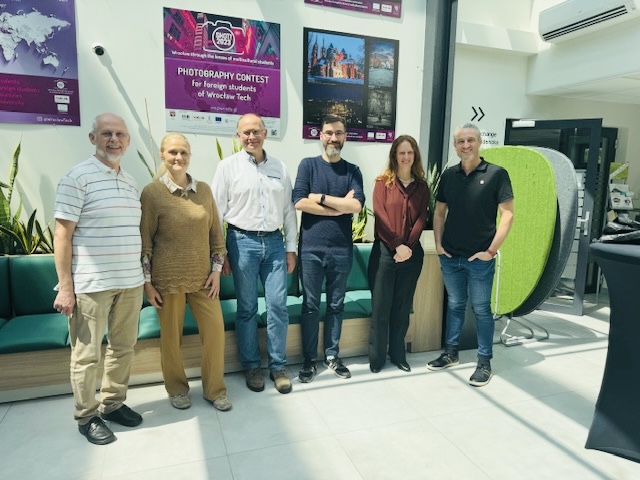YOUR BROWSER IS OUT-OF-DATE.
We have detected that you are using an outdated browser. Our service may not work properly for you. We recommend upgrading or switching to another browser.
Purpose of the meeting: get to know each other and to initiate curriculum mapping
among 3 T.I.M.E. partner institutions as a foundation for future double degree programmes.
Discussions focused on academic alignment, method of programme mapping, course
compatibility and institutional regulations affecting mobility.
Educational system differences:
Germany (TU Darmstadt): flexible exams, remote assessments possible.
Spain (UPC): two semester options, requiring a supervisor abroad.
Poland (Wrocław Tech): typically 7+3 semesters, with some 4-semester Master’s.
France (Grenoble): 6-year integrated system (Bachelor + Master).
Mobility models:
At least two semesters abroad required for recognition of double degree in Poland.
Flexible, modular structures proposed (e.g., shared core made at home university+ electives made in partner univ).
Pilot: Wrocław–Darmstadt path starting in March (summer semester).
Learning outcomes and flexibility:
Course titles do not need to match—focus on outcome equivalency.
Learning outcomes are formulated in general terms which is also a kind of challenge when comparing them.
TU Darmstadt praised for outcome-based flexibility aligned with labor market needs.

Andreas, Ewa, Marcin, Wojciech, Gwenaëlle, Joan
Purpose and Key Insights – MACInAc Project Meeting
Language & Curriculum challenges:
•The importance of master's education in English, because students are looking for such offerings aboroad
• ECTS discrepancies: e.g., Master's thesis must be accepted in both curricula
• Master Curricula basic components: mandatory subjects, optional subjects, often to be found in “catalogues” with a
certain focus of subjects, Master’s thesis (typically 30 ECTS).
• The main issue of mapping – it must be revised, let’s say once a year, according to the development of teaching in the
partner institutions, to be up to date. Since no partner can invest that much time, the mapping either must be done
once, containing a disclaimer, or DD students must map the modules they want to attend using the module
descriptions, which is our preferred method.
Practical and structural observations:
• Limited exchange spots in high-demand specializations.
• Professors require clear curriculum structures to initiate collaboration.
• Proposed and agreed that the agreement should be standarised among the network partners.
• Visualization and promotion of programmes are essential to attract students, clear information.
Next steps:
• Form working groups (PWr–TUDa–UPC) to analyse specific programmes and administration issues.
• Start with Computer & Communication Engineering; consider other fields later.
• Create flexible study plans and one common double degree agreement template.
• Explore new joint programmes, e.g., in Quantum Computing.
• Promote success stories, clarify student benefits, and simplify professor involvement.
